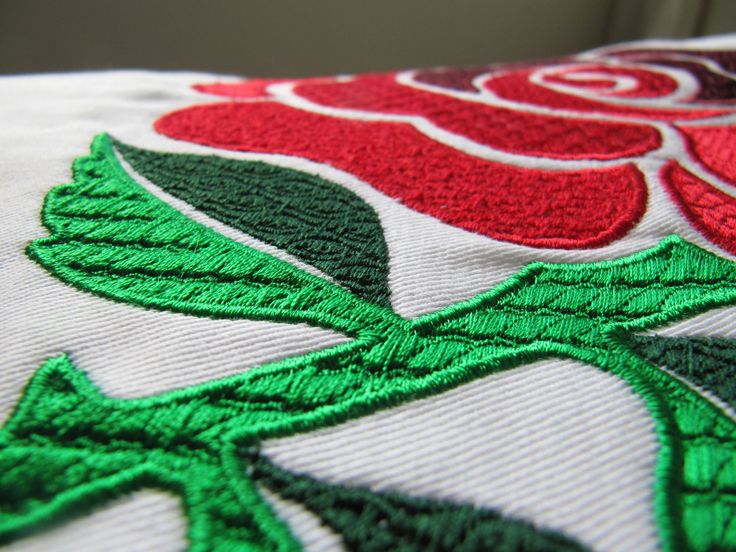When it comes to embroidery, the artwork alone is not sufficient. To embroider a design with computerized machines, only a design file fails to serve the required purpose well. While the artwork is also gravely vital, for the process, another skill-set often overshadows the former. Yes, we are talking about embroidery digitizing. Like any other specialized skill, digitized files are prepared by a professional embroidery digitizer.
What does An Embroidery Digitizer do?
Embroidery machines are extremely efficient and smart these days. The process is quick and fairly automated. Despite this, these machines are not self-sufficient when it comes to interpreting the designs. A design, in a simple digital format, cannot be understood and embroidered by the machine on its own. The reason for this is pretty clear.
Most garment printing techniques are capable of using and imprinting from design files. Embroidery is an exception and that is because embroidered designs are composed of stitches. Digitizing is the answer which bridges this gap. The digitized format of a design is its stitch representation. It demarcates parameters such as stitch placement, stitch types, stitch paths and density through different areas of a design.
The responsibility of defining these parameters rests with an embroidery digitizer. The digitized format of a design is created on a computer program, commonly referred to as an embroidery digitizing software. A digitizer is not only an expert at operating this program but is also expected to be well-acquainted with the production process. Without this background knowledge, there is always a possibility of creating files that are likely to encounter intricacies during and after the embroidering.
So, in a nutshell, it is a digitizer who is virtually operating the machine through the digital input. Variants such as fabric type, thread types, machine manufacturers and design complications often come into the play. All of this has to be taken into account by a digitizer while preparing the digitized files. All in all, it is a pretty challenging job role, with a lot to take care and worry about. Surprisingly, there is still a perception that undermines the skill by stating that almost anyone can digitize designs on their own.
Can Anyone Be An ‘Embroidery Digitizer’?
Since embroiderers spend a lot on digitizing, they are always looking for ways to reduce these costs. It is especially true for aspirants or home-based embroiderers who find it hard to continuously spend on getting digitized files. Moreover, the frustration aggravates when they often receive disappointing results from the embroidery digitizers. Spending loads of money and not getting desired results obviously paves the way for alternatives.
One of the alternatives is doing the digitizing themselves. For an embroiderer, this sounds like a lucrative option, at least apparently. But as great as it sounds, this alternative is not really a practical option for most embroiderers. Digitizing for embroidery is a specialized job. Like any specialized skill, it has to be learned from scratch until one attains professional expertise.
Is Embroidery Digitizing Too Hard To Learn?
It is not that digitizing is too hard a skill to master. The only problem is that it is too hard to master quickly, as desired by the most. Of course, anyone can become an embroidery digitizer but it requires plenty of practice and experience to digitize professionally. Unfortunately, most people don’t have enough time to invest, nor have the nerves to learn and practice various techniques bit by bit.
Furthermore, there is a difference between merely digitizing and digitizing professionally. Today, there is an abundance of embroidery digitizing software. It is now easier to learn and operate these computer programs. This leads many to believe that digitizing is easy and is something they can manage on their own.
The fact is that most of them only know how to operate a particular software program. In fact, many designs digitized by beginners cannot be used commercially. It is important to understand that digitizing professionally is a skill that requires far more than merely operating an embroidery digitizing software. This doesn’t mean that one should not try their hands on digitizing. It is always handy to know a skill that one so often comes across but a clear distinction between a professional and a trainee must be maintained.
Auto-Digitizing And Role Of Embroidery Digitizer:
Quite recently, the term auto digitizing surfaced to the scene. The term was introduced by few embroidery digitizing software manufacturers. Irrespective of its effectivity, the term definitely offered exciting prospectives. The basic idea was to equip software in a way that it doesn’t need external input to digitize the designs.
A design has to be simply imported and the software will create a digitized format of the design. Although it is an interesting food for thought, auto-digitizing has still got a long way to go. A software can recognize a design but it is still not possible for it to define stitch parameters through different areas of the design. That still requires human intuition and therefore, the role of embroidery digitizing services is still pretty relevant.
Nevertheless, the advent of the concept is refreshing as it vows to minimize the manual effort involved. With that said, the odds of pure automation, that is independent of external input are slim in the near future. In fact, hoping for any such solution should be seen as overly optimistic. Though, what we can expect and hope in the coming years, is to see a solution that merges both the automation and the manual effort. Thereby, enabling us to prepare better quality digitized files with minimum manual input involved.
Finding A Professional Embroidery Digitizer:
Digitizers, as we saw, have an imperative role to play for embroiderers. They need digitizing services to run their businesses efficiently. Their services can be availed in different ways. Either one can hire an in-house digitizer or outsource to a remote embroidery digitizer. We have previously discussed that why outsourcing to an embroidery digitizing service is the best option for most businesses.
With a service provider, an embroiderer doesn’t have to find and evaluate digitizers on a regular basis. Moreover, in this way, an embroiderer doesn’t have to engage in day to day affairs and ensure timely delivery of acceptable quality digitized files. All such things are already settled and are taken care by the service provider themselves.
If you are looking for the services of an embroidery digitizer, the good news is you don’t have to go elsewhere. With an experience of 15 years in the business, we are here to provide you quality and cheap digitizing for embroidery. For only $1/ 1000 stitches, our team of experienced digitizers prepare digitized formats and deliver them in less than a day. If this excites you, get a quote today and see the results yourself.




